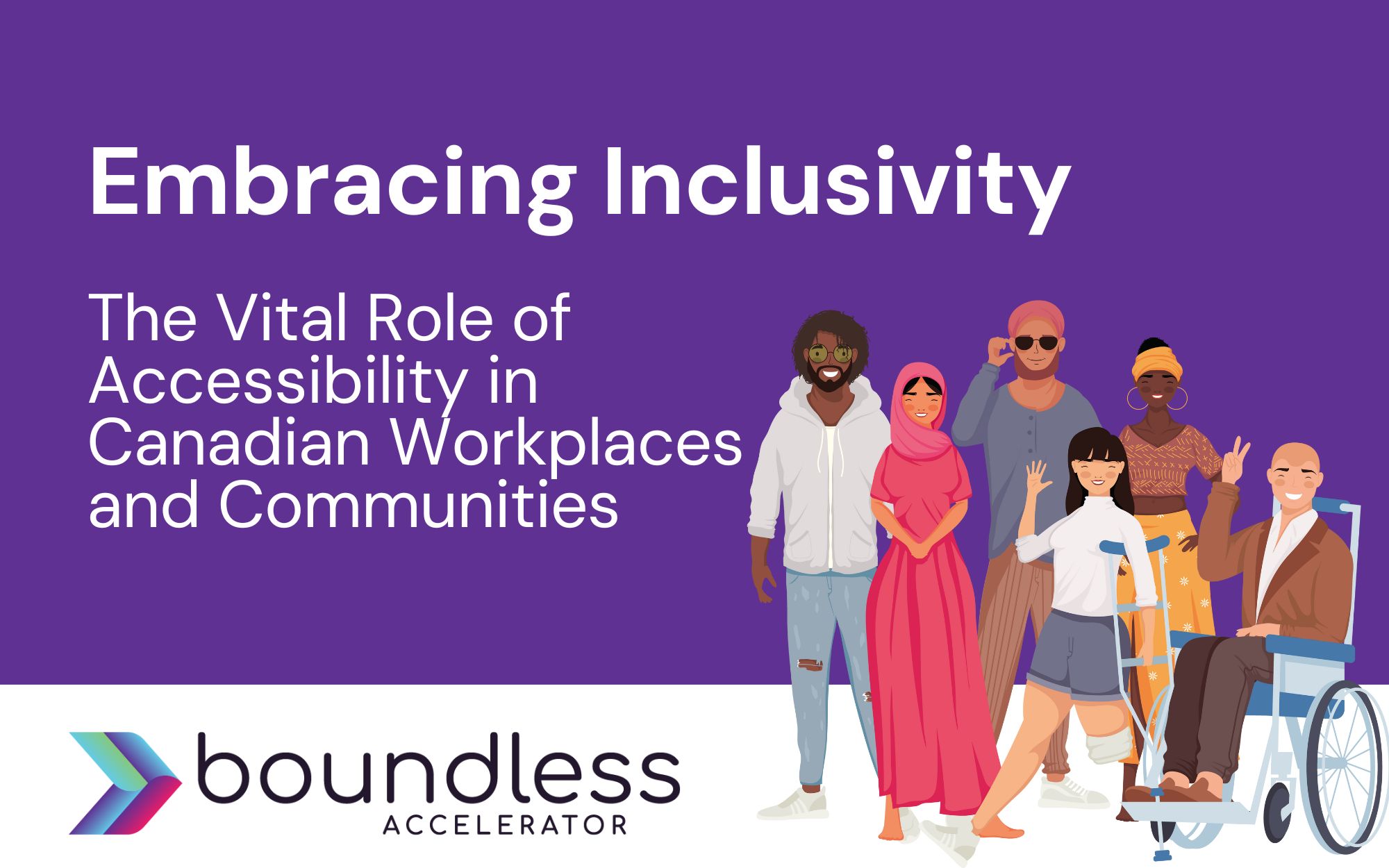Written by: Jennifer King
In Canada, embracing inclusivity and ensuring accessibility in workplaces and communities is not just a moral imperative but an important aspect of fostering a thriving, equitable society. Accessibility goes beyond physical spaces; it encompasses digital accessibility, inclusive policies, and attitudes that promote full participation for everyone, regardless of their abilities. By focusing on accessibility, we can unlock the potential of all Canadians, driving innovation and economic growth while building a more just and inclusive nation.
The Importance of Accessibility in the Workplace
Accessibility in the workplace is crucial for creating an environment where all employees can contribute to their fullest potential. According to Statistics Canada, approximately one in five Canadians aged 15 and older—about 6.2 million people—have one or more disabilities. Despite this significant portion of the population, many workplaces still struggle with accessibility, leading to unemployment or underemployment for individuals with disabilities.
“When workplaces are inclusive and accessible, everyone benefits,” says the Canadian Council on Rehabilitation and Work (CCRW). “Employees with disabilities bring diverse perspectives, skills, and talents that can drive innovation and improve organizational performance.”
A 2018 study by the Conference Board of Canada found that businesses can expect a return on investment of $1.24 for every dollar spent on accommodating employees with disabilities. This return comes from reduced employee turnover, lower recruitment costs, increased productivity, and enhanced company reputation. Furthermore, accessible workplaces foster a culture of inclusion and respect, which can lead to higher employee satisfaction and engagement.
Community Accessibility: Building Inclusive Spaces
Community accessibility ensures that everyone, regardless of their abilities, can participate fully in social, cultural, and economic life. Inaccessible public spaces, transportation, and services can create significant barriers for individuals with disabilities, leading to social isolation and economic disadvantage.
Canada has made strides in improving accessibility through legislation like the Accessible Canada Act (ACA), which aims to create a barrier-free Canada by 2040. The ACA focuses on identifying, removing, and preventing barriers in areas under federal jurisdiction, including transportation, telecommunications, and banking.
“Accessibility is about creating environments that enable all people to participate fully in society,” states the Government of Canada. “It’s about removing barriers that prevent people with disabilities from living independently and contributing to their communities.”
The Role of Technology in Enhancing Accessibility
Technology plays a critical role in enhancing accessibility, particularly in the digital realm. Accessible websites, apps, and digital content ensure that individuals with disabilities can access information and services on par with everyone else. According to a report by the Inclusive Design Research Centre, inclusive digital design can significantly improve user experience for all, not just those with disabilities.
For businesses, investing in accessible technology is not just about compliance but also about reaching a broader audience. The Web Content Accessibility Guidelines (WCAG) provide a global standard for web accessibility, ensuring that digital content is perceivable, operable, understandable, and robust for all users.
Moving Forward: The Path to Greater Accessibility
Achieving greater accessibility in workplaces and communities requires a collaborative effort from government, businesses, and individuals. Education and awareness are key to changing attitudes and breaking down stereotypes about disabilities. Employers can benefit from resources and support provided by organizations like the Rick Hansen Foundation, which offers training and certification programs to improve accessibility in workplaces and public spaces.
By embracing inclusivity and prioritizing accessibility, Canada can build a society where everyone has the opportunity to thrive. Accessible workplaces and communities not only benefit individuals with disabilities but also contribute to a more innovative, productive, and cohesive society. As we move forward, let’s commit to creating environments that empower all Canadians to reach their full potential.
“Accessibility is not a privilege, but a fundamental human right,” says the Accessibility for Ontarians with Disabilities Act (AODA). “Together, we can create a world where everyone belongs.”
At Boundless Accelerator™, we are dedicated to supporting initiatives that promote accessibility and inclusivity in all aspects of life. Let’s champion this cause, driving change that ensures every Canadian, regardless of ability, can contribute to and benefit from a truly inclusive society. Together, we can build a brighter, more equitable future for all.

